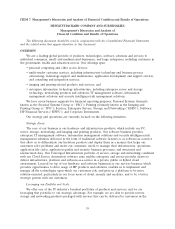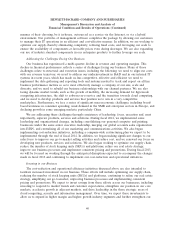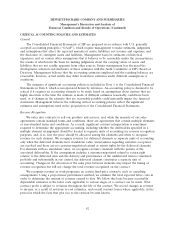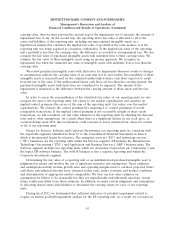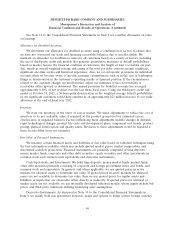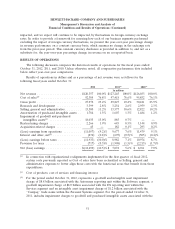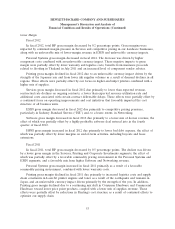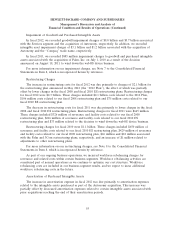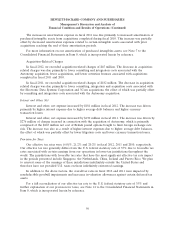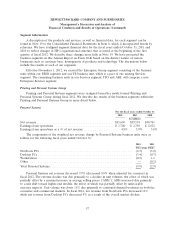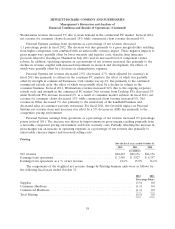HP 2012 Annual Report Download - page 57
Download and view the complete annual report
Please find page 57 of the 2012 HP annual report below. You can navigate through the pages in the report by either clicking on the pages listed below, or by using the keyword search tool below to find specific information within the annual report.HEWLETT-PACKARD COMPANY AND SUBSIDIARIES
Management’s Discussion and Analysis of
Financial Condition and Results of Operations (Continued)
See Note 14 to the Consolidated Financial Statements in Item 8 for a further discussion on taxes
on earnings.
Allowance for Doubtful Accounts
We determine our allowance for doubtful accounts using a combination of factors to ensure that
we have not overstated our trade and financing receivables balances due to uncollectibility. We
maintain an allowance for doubtful accounts for all customers based on a variety of factors, including
the use of third-party credit risk models that generate quantitative measures of default probabilities
based on market factors, the financial condition of customers, the length of time receivables are past
due, trends in overall weighted-average risk rating of the total portfolio, macroeconomic conditions,
significant one-time events and historical experience. Also, we record specific provisions for individual
accounts when we become aware of specific customer circumstances, such as in the case of bankruptcy
filings or deterioration in the customer’s operating results or financial position. If the circumstances
related to the customer change, we would further adjust our estimates of the recoverability of
receivables either upward or downward. The annual provision for doubtful accounts has averaged
approximately 0.10% of net revenue over the last three fiscal years. Using our third-party credit risk
model at October 31, 2012, a 50-basis-point deterioration in the weighted-average default probabilities
of our significant customers would have resulted in an approximately $23 million increase to our trade
allowance at the end of fiscal year 2012.
Inventory
We state our inventory at the lower of cost or market. We make adjustments to reduce the cost of
inventory to its net realizable value, if required, at the product group level for estimated excess,
obsolescence or impaired balances. Factors influencing these adjustments include changes in demand,
rapid technological changes, product life cycle and development plans, component cost trends, product
pricing, physical deterioration and quality issues. Revisions to these adjustments would be required if
these factors differ from our estimates.
Fair Value of Financial Instruments
We measure certain financial assets and liabilities at fair value based on valuation techniques using
the best information available, which may include quoted market prices, market comparables and
discounted cash flow projections. Financial instruments are primarily comprised of time deposits,
money market funds, corporate and other debt securities, equity securities and other investments in
common stock and common stock equivalents and derivative instruments.
Cash Equivalents and Investments: We hold time deposits, money market funds, mutual funds,
other debt securities primarily consisting of corporate and foreign government notes and bonds, and
common stock and equivalents. In general, and where applicable, we use quoted prices in active
markets for identical assets to determine fair value. If quoted prices in active markets for identical
assets are not available to determine fair value, then we use quoted prices for similar assets and
liabilities or inputs that are observable either directly or indirectly. If quoted prices for identical or
similar assets are not available, we use internally developed valuation models, whose inputs include bid
prices, and third party valuations utilizing underlying asset assumptions.
Derivative Instruments: As discussed in Note 10 to the Consolidated Financial Statements in
Item 8, we mainly hold non-speculative forwards, swaps and options to hedge certain foreign currency
49


